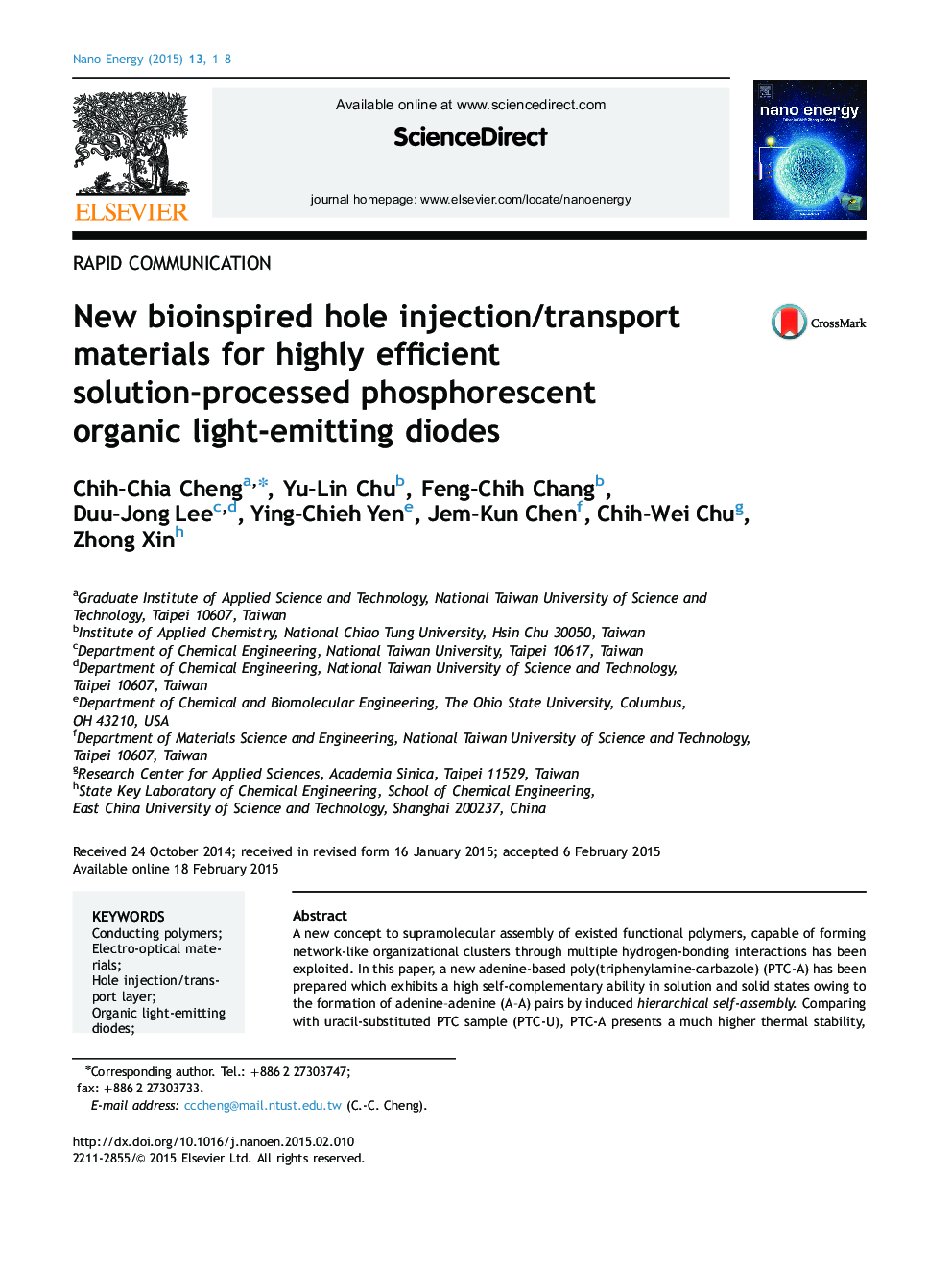| Article ID | Journal | Published Year | Pages | File Type |
|---|---|---|---|---|
| 1557567 | Nano Energy | 2015 | 8 Pages |
•A new series of nucleobase-mimetic π-conjugated polymers has been developed.•Nucleobases can strongly modulate the electrical properties of the conjugated polymers.•PTC-A exhibited superior performance relative to the device from commercial PEDOT:PSS.•This newly developed material is advancing for next-generation high-efficiencient LED devices and low-cost fabrication process.
A new concept to supramolecular assembly of existed functional polymers, capable of forming network-like organizational clusters through multiple hydrogen-bonding interactions has been exploited. In this paper, a new adenine-based poly(triphenylamine-carbazole) (PTC-A) has been prepared which exhibits a high self-complementary ability in solution and solid states owing to the formation of adenine–adenine (A–A) pairs by induced hierarchical self-assembly. Comparing with uracil-substituted PTC sample (PTC-U), PTC-A presents a much higher thermal stability, electrochemical stability and solvent-resistance ability due to the formation of the more stable physically cross-linking structure. When the PTC-A is utilized as a hole injection/transport layer in a trilayer OLED device, a remarkable improvement in performance relative to the control PTC and PTC-U under similar experimental conditions has been achieved. Further comparison with a control device using a conventional PEDOT:PSS, the efficiency of the solution-processed phosphorescent PLED device with PTC-A is significantly higher than those of PTC-U and PEDOT:PSS-based devices. Thus, PTC-A represents the next-generation hole injection/transport material for high efficiency LED device and low-cost fabrication process.
Graphical abstractA novel adeninel-functionalized poly(triphenylamine-carbazole) (PTC-A) is able to form physical crosslinkage resulting in excellent hole injection/transport and electron-blocking capabilities for high-performance solution-processed phosphorescent PLED devices. Further comparison with a control device using a conventional PEDOT:PSS, PTC-A is significantly higher than those of PEDOT:PSS-based devices. Thus, PTC-A represents the next-generation hole injection/transport material for high efficiency LED device and low-cost fabrication process.Figure optionsDownload full-size imageDownload as PowerPoint slide
